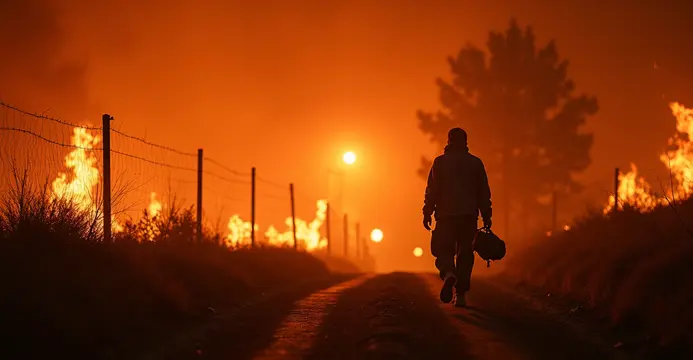Southern Europe faces extreme temperatures up to 45°C, triggering emergency cooling measures. The Netherlands anticipates its own heatwave, activating health protections for vulnerable groups as climate change intensifies such events.

Record-Breaking Heat Engulfs Southern Europe
An extreme heatwave is gripping Southern Europe this weekend, with temperatures soaring above 40°C across Spain, Portugal, Italy, and France. The intense conditions stem from hot air masses originating in the Sahara Desert moving northward. Spain's Madrid and Andalusia regions face peak temperatures of 45°C, while Portugal's Lisbon anticipates 42°C.
Emergency Measures Implemented
Italian authorities have declared code red alerts in multiple cities from Milan to Palermo, where temperatures reach 39°C. This highest-level warning indicates dangers for both vulnerable populations and healthy individuals. Rome has opened municipal swimming pools free for residents over 70. Similarly, France's Marseille offers free pool access, while Nice provides 250 portable fans to schools and elderly facilities.
Wildfire Risks and Northern Expansion
Portugal and Greece have intensified wildfire monitoring as temperatures hit 42°C, following recent major fires on Greece's Chios island that required hundreds of firefighters. Meanwhile, the Netherlands prepares for its own heat surge, with forecasts predicting 35-36°C in southern regions by Tuesday, potentially meeting official heatwave criteria (5 consecutive days above 25°C including 3 days over 30°C).
Netherlands Activates Heat Plan
The Dutch National Institute for Public Health (RIVM) has activated its Heat Plan for Limburg and North Brabant - the first such action in three years. The plan alerts healthcare workers to heat dangers, particularly for over-75s who struggle with temperature regulation and thirst recognition. The measure may extend nationwide next week.
Climate Change Connection
This event aligns with climate change patterns where European heatwaves occur 3-4 times more frequently than in comparable mid-latitude regions. Since the industrial revolution, global temperatures have risen over 1.3°C due to greenhouse gas emissions. Research confirms heat extremes are intensifying while dry periods grow drier, creating compound risks.

 Nederlands
Nederlands
 English
English
 Français
Français
 Deutsch
Deutsch
 Español
Español
 Português
Português









